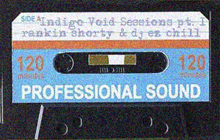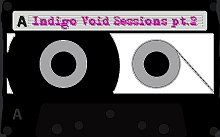
The claim: the Euclidean algorithm computes the greatest common divisor of two natural numbers. It can also generate a large family of popular musical core rhythms, simply by distributing rhythmic sounds as evenly as possible. Using some additional math, Euclidean rhythms can even be clustered in ethno-musicologically relevant ways.
The evidence: musical arguments
In this video you see how oldskool mathematics can be used to create a seriously funky beat. Please note that the Euclidean algorithm as such doesn't produce a complete beat. The algorithm only produces monophonic patterns of 'attacks' or onsets. If you combine some of these simple 'Euclidean' patterns, and let each pattern trigger a drum sound, you'll end up with a groove similar to the one in the video.
In his book The Geometry of Musical Rhythm, the percussion playing computer scientist Godfried T. Toussaint has collected a number of ways to analyse rhythms geometrically (if you think this involves measuring the Great Pyramid of Giza you're wrong). Toussaint looks at the time-aspect of rhythm, and he concentrates on so-called 'timelines'. The most famous timeline is the Son Clave. The Standard bell pattern and the Tresillo are also very well known. Again for readers who don't play percussion: these timelines are not complete rhythms, they're just single patterns, used as a structural foundation.
The son clave and the rumba clave are used in Cuban popular music, but that doesn't mean you can create a complete salsa groove using just this Max for Live Euclidean Rhythm Generator, because a salsa beat also has lots of 'Non-Euclidean' patterns in it! Having said that, Euclidean rhythm generators can be very interesting for computer musicians. It's an easy way to put some funk in a straight groove.
For 'real' percussionists and drummers, the Euclidean rhythm-meme is much less interesting. It's really just a theoretical confirmation of ancient musical knowledge. The Euclidean algorithm distributes the 'attacks' in a pattern as evenly as possible (if you want to know how it works check out this paper by Godfried Toussaint) and musically, that simply makes a lot of sense. You get a lot of space and a lot of structure in a very economical way and for many musical styles, especially the ones based on complex rhythms, that works very well.
The evidence: numerological arguments
There's a specialized type of mathematics, which is interested in so-called Euclidean strings. Put simply, a Euclidean rhythm is also a Euclidean string if you can rotate it one step clockwise and end up with a new Euclidean rhythm. There's another variation: the reverse Euclidean string, which is - more or less - played backwards. In the example below the cycle represents one measure. The dots are attacks. The pattern of dots is a rhythm. This timeline is the Bembé.

Two right-rotations of the Bemb´e string: (a) the Bemb´e, (b) rotation by one unit, (c) rotation by seven units (Toussaint 2005).
In world music, from Brazil to West-Africa to Europe, there are lots of different 'Euclidean' timelines which can be categorized as either
- Euclidean string
- reverse Euclidean string
- neither Euclidean nor reverse Euclidean strings
- the Euclidean rhythms favored in jazz and classical music are Euclidean strings; these are not popular in Africa
- the Euclidean rhythms that are reverse Euclidean strings are most popular in India, North Africa and Europe
- the third group is most popular in West-Africa

The verdict
Musical rhythm is a very complex thing. It's totally impossible to define it in words, or otherwise. But certain isolated aspects of rhythm may be encapsulated using Aristotelian logic, Euclidean mathematics and other left-brain activities. Godfried Toussaint did some great research, but it's a pity he coined the term Euclidean rhythm. From a numerological point of view it might sound sexy (Cartesian rhythms anyone?) but an even distribution of attacks in a rhythmic pattern is such a simple concept that musicians don't need a rectilinear kind of person like Euclid or his algorithm to figure it out. Having said that, it's definitely rewarding for musicians to check out other geometrical properties of rhythm, such as rhythmic oddity, deep rhythms etc.
Exercizes
1. If you're a computer musician: play hand drums more often. If you're a percussionist: check out a Euclidean rhythm plug-in or app.
2. Read Godfried Toussaint's book about the Geometry of Rhythm and apply the ideas presented to the construction of musical scales.
3. Playing 2 against 3 is the single most important rhythmic principle of West-African music. Explain this in a numerological vocabulary, using only whole numbers. Next, explain it in musical fashion.
















